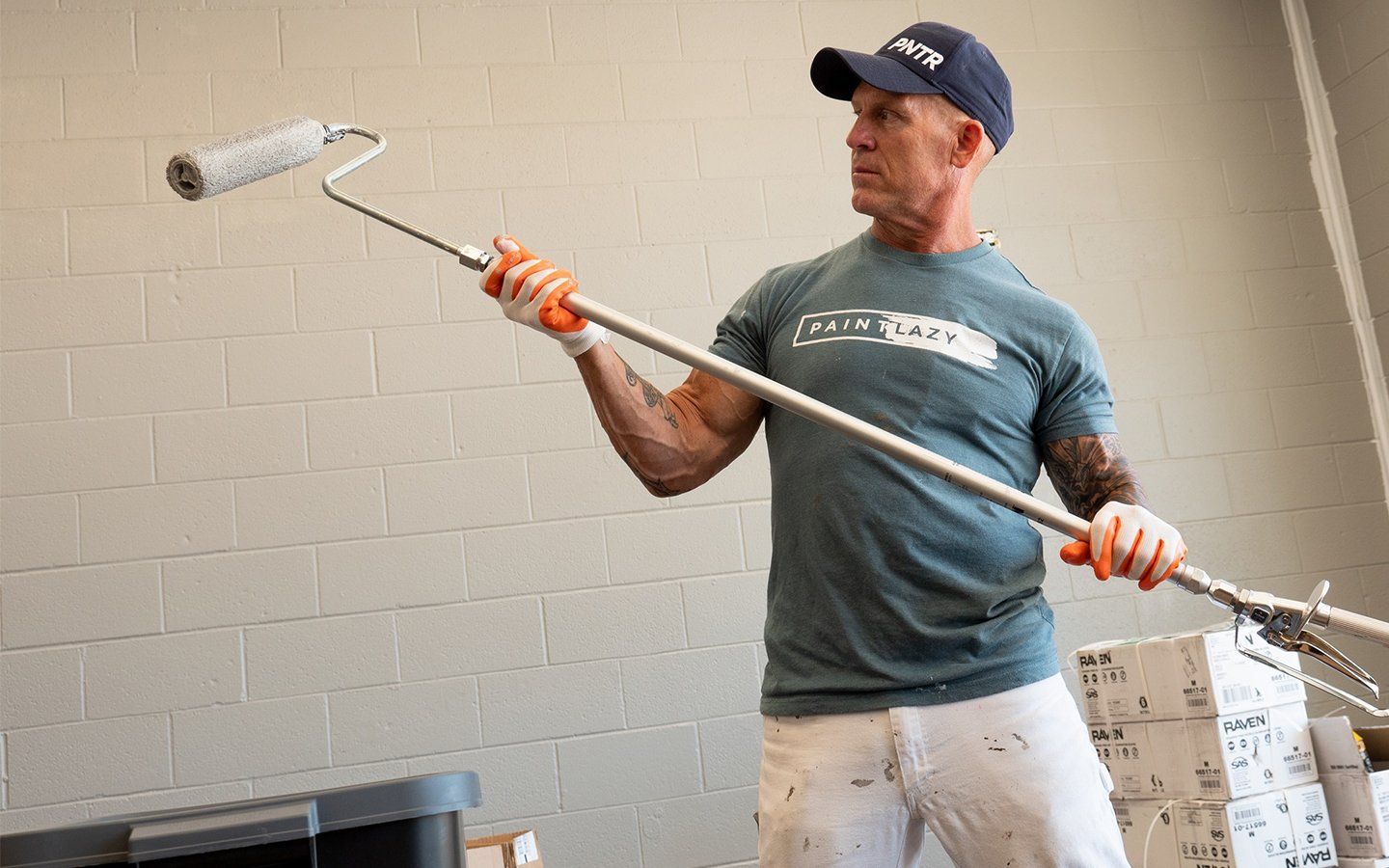Why Back Roll?
What is back rolling anyways? Back rolling is rolling with a paint roller or brushing over the paint applied by an airless sprayer to cause better penetration and adhesion. When back brushing fences, decks, or log homes we use a Deck Boss stain brush. Back rolling stucco or exterior siding we use a Koda Wool roller. If I am back rolling interiors I use a Premier White Woven roller.
To understand why we back roll you need to understand airless spraying and how it applies paint. Airless spraying applies paint in a nice even finish that creates a layer or film of paint on the substrate you are painting. Airless spraying applies paint faster than any other form of painting. The sprayer essentially acts as the paint applicator.
Airless spraying itself does not cause penetration or enhance adhesion. In many cases it lays a layer of paint over the surface spanning gaps, cracks, pin holes and does not actually penetrate those troubled areas. This spanning or bridging will soon crack and separate as temperatures rise or fall causing the paint to expose those troubled areas again. This will be a paint failure in the future.
In order to get proper adhesion and penetration you need to force the paint into the voids or troubled areas described. To do this we use a paint brush, a Deck Boss, or paint roller which is very effective in forcing the paint into these areas. You can see the Paint Life Crew in action back rolling paint in this video HERE. This forced penetration is achieving the desired effect of a completely covered and penetrated substrate with the adhesion that will last for many years.
Does every surface need to be back rolled after spraying? No. You can actually damage or create an unwanted finish if you back roll certain surfaces. I will bring up one surface that I get questioned about occasionally. When spraying a door that appears to be wood but is actually smooth metal, you can really create a horrible finish if you back roll the door after spraying. Stippling created by a paint roller or roping caused by a paint brush in most cases is not the desired finish.
Metal or any non-porous surface does not need to be back rolled. What you are trying to achieve in many cases with an airless sprayer is the glassy automobile like finish. Back rolling will destroy this ideal finish. Back rolling has two purposes, to enhance penetration and adhesion. Spraying on a metal door or any non-porous surface and back rolling over it will not give you the desired result unless you are after a stippled effect.
There is a time and place for many painting tasks and back rolling is one of them. Back roll when necessary and allow the sprayer to do its jobs when back rolling is not necessary. Watch my back rolling video for a more detailed explanation HERE.
You can visit our Paint Life store for cool gifts for your favorite painters, Paint Life apparel, and get game changing tools for all your painting jobs. Enter store
HERE.
Does every surface need to be back rolled after spraying?
No. You can actually damage or create an unwanted finish if you back roll certain surfaces.
Chris Berry - The Idaho Painter




